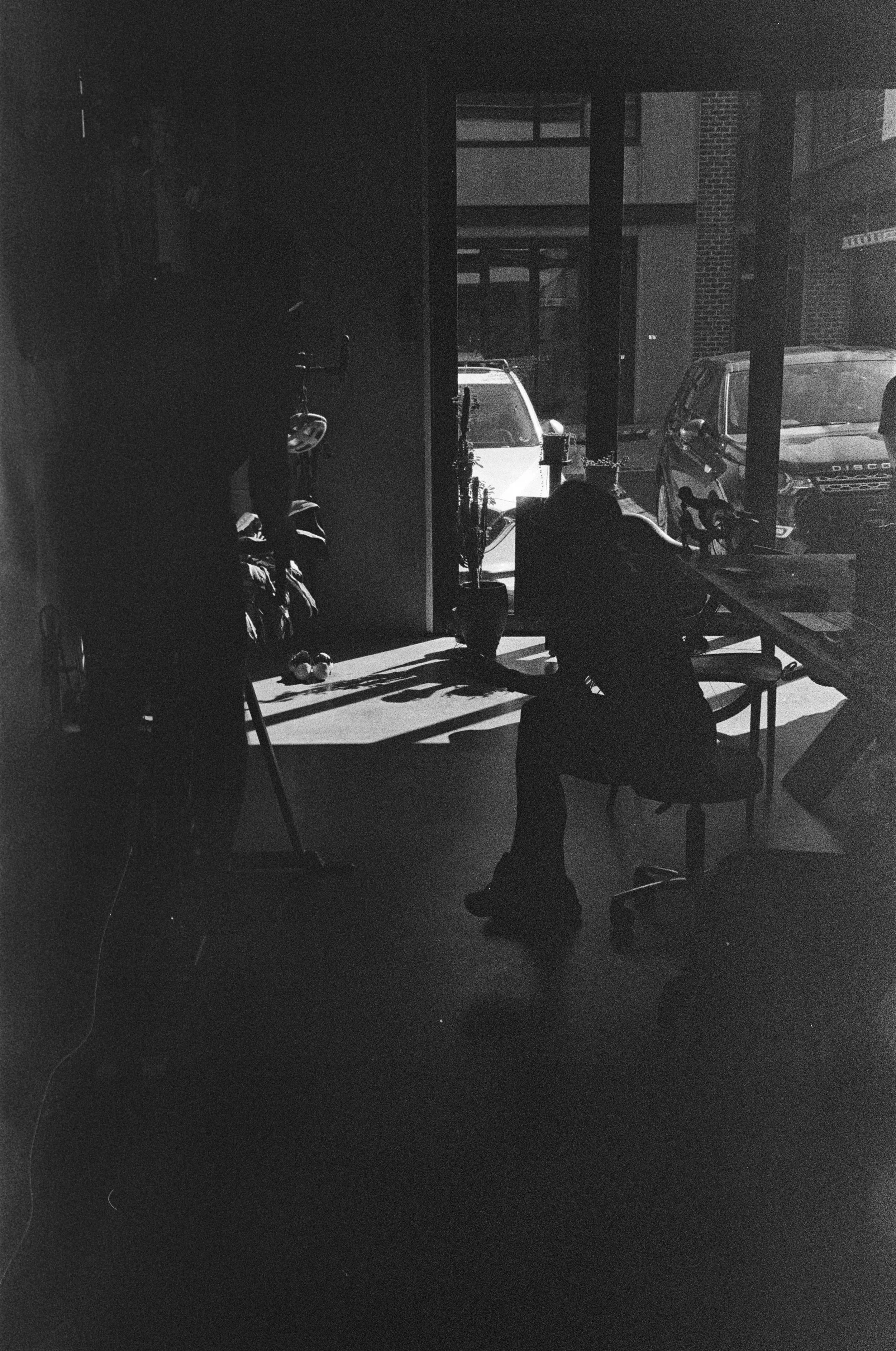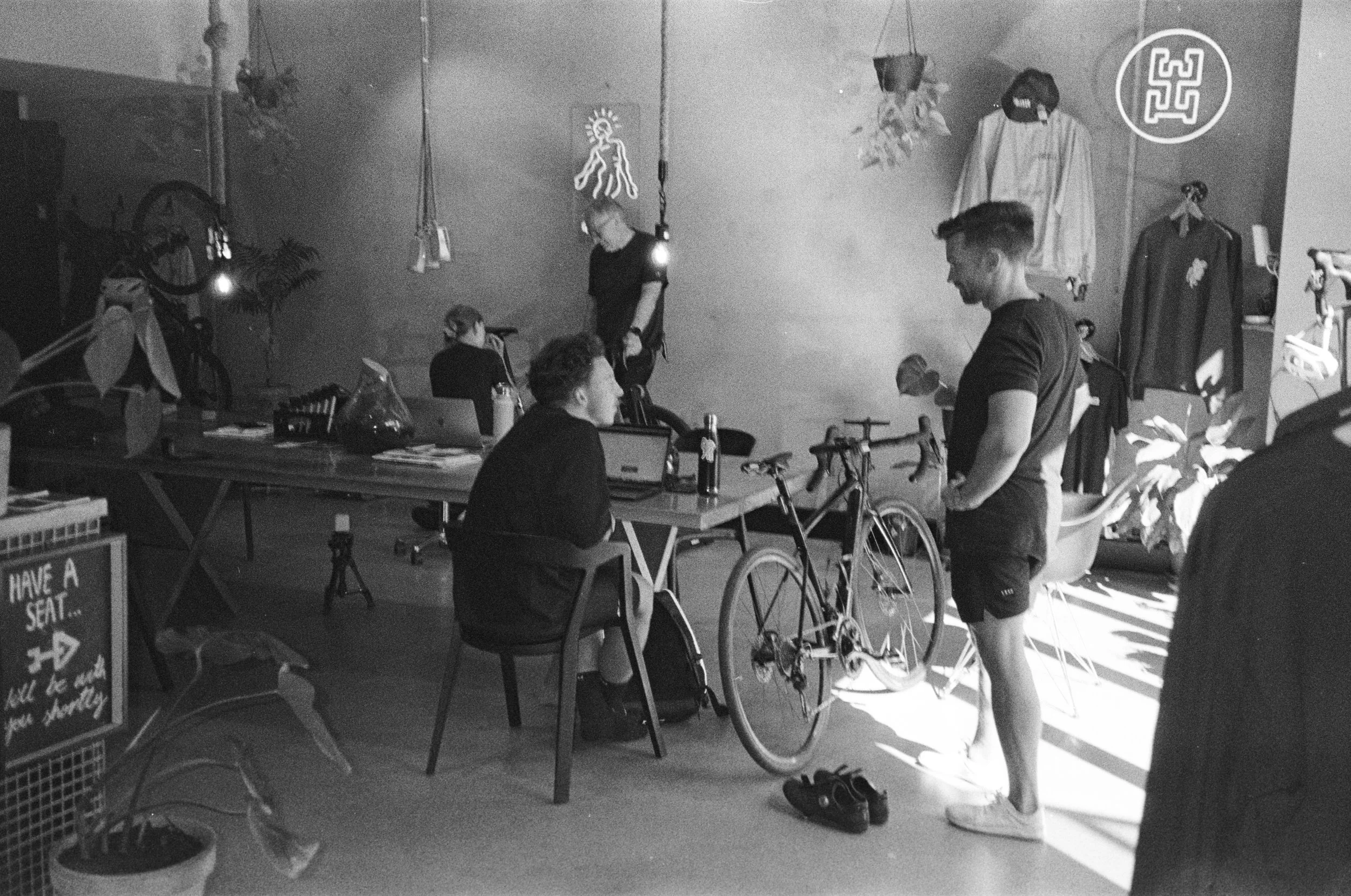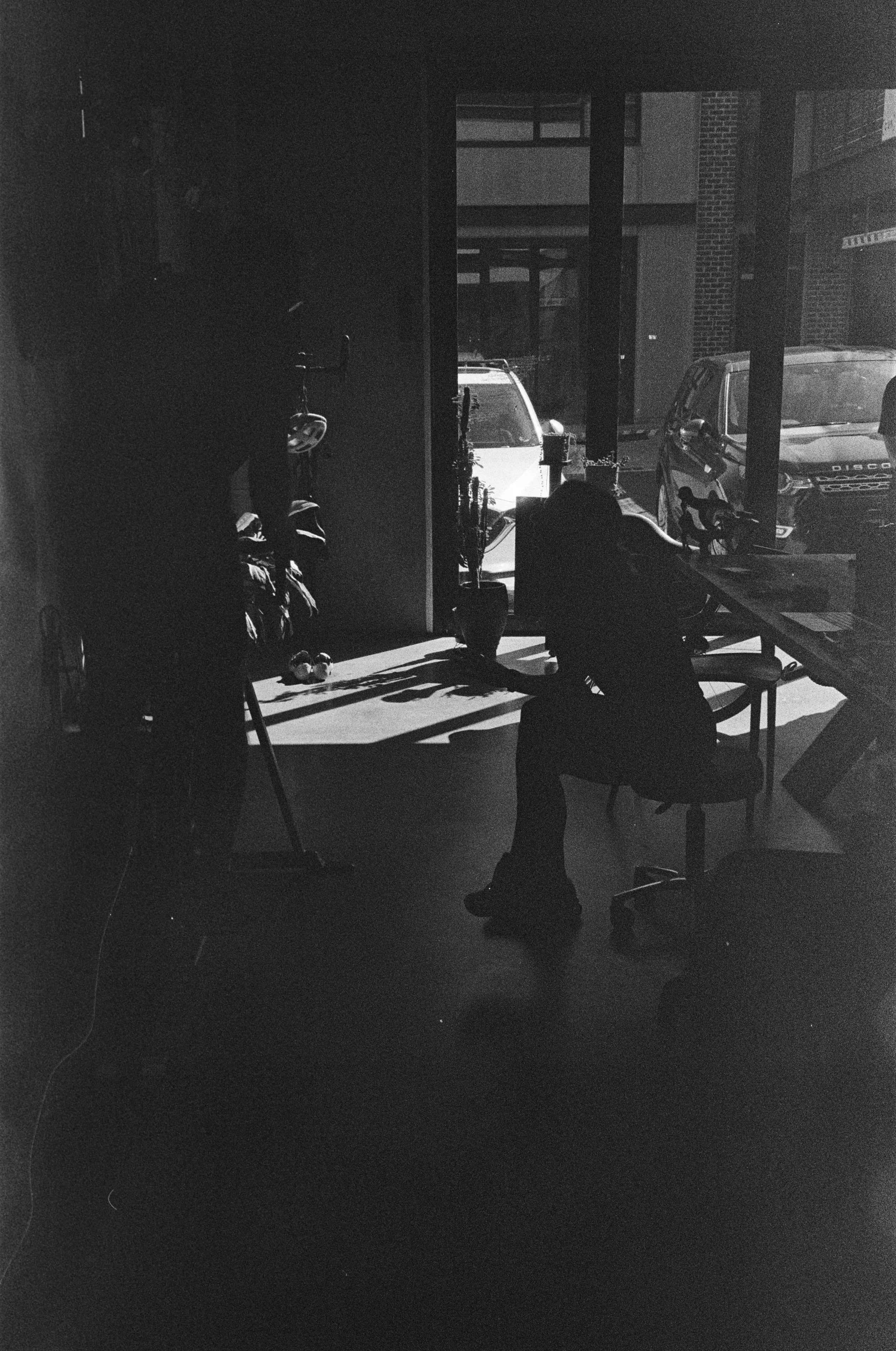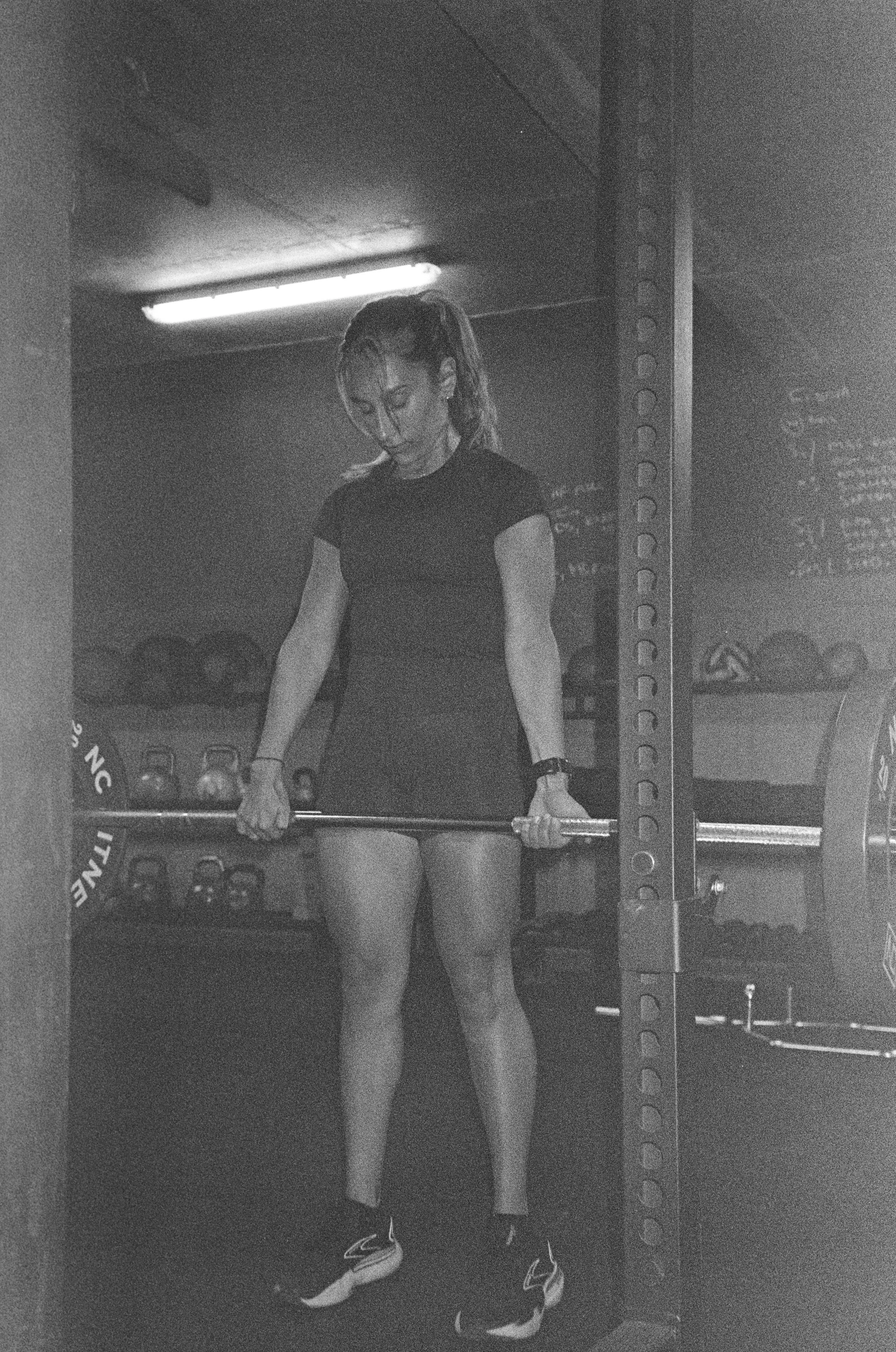The Complete Lower Back Pain Rehab Guide Melbourne
Table of Contents
Understanding Your Lower Back Pain
The Anatomy Behind the Ache
Types of Lower Back Pain We Treat
Red Flags: When to Seek Immediate Help
Evidence-Based Treatment Approaches
Our Philosophy at Evolutio Richmond
Manual Therapy Techniques
Exercise Prescription
Effective Home Management Strategies
Pain Relief Techniques
Essential Exercises You Can Do at Home
Ergonomic Improvements
Building Back Resilience
Lifestyle Modifications
When to Seek Professional Help
Signs You Need Physiotherapy
What to Expect at Evolutio Richmond
Complementary Treatments
Injection Therapies
Surgical Considerations
Recovery Timelines and Expectations
Acute Pain Recovery
Chronic Pain Management
Lower Back Pain During Pregnancy
Age-Related Changes
Athletic Populations
Introduction
At Evolutio Sports Physio Richmond, we've treated thousands of lower back pain cases over the years. What strikes me most about this condition? Nearly 80% of Australians will experience significant lower back pain at some point in their lives according to Arthritis Australia. That's a staggering number, and it's why we've developed this comprehensive guide.
Lower back pain doesn't discriminate. You can be incredibly active, training seven times a week, or sitting all day at work, you can be young or older, an older parent or a new parent with a newborn that doesn’t want to nap. We’ve seen them all walk through our Richmond physiotherapy clinic doors. The good news is that with the right approach, most people can achieve remarkable recovery.
This guide represents everything we've learned from treating patients across Melbourne's inner suburbs. From Prahran professionals to South Yarra athletes, the principles remain consistent while the applications vary dramatically. If you're also dealing with running-related injuries, many of the principles in this guide will complement your recovery journey.
Understanding Your Lower Back Pain
The Anatomy Behind the Ache
Your lower back, or lumbar spine, consists of five vertebrae stacked like building blocks. Between each vertebra sits a disc – think of it as a jelly donut that absorbs shock and allows movement. Surrounding these structures are muscles, ligaments, and nerves that work together like a complex orchestra.
When this orchestra falls out of tune, pain emerges. Sometimes it's sharp and sudden. Other times it develops gradually, like a slow burn that eventually becomes unbearable. The Australian Physiotherapy Association recognizes lower back pain as one of the most common conditions requiring physiotherapy intervention.
Types of Lower Back Pain We Treat
Acute Lower Back Pain Duration: Less than 6 weeks Characteristics: Often sudden onset, may follow specific incident Common causes: Muscle strain, ligament sprain, disc herniation
Subacute Lower Back Pain Duration: 6-12 weeks Characteristics: Persistent pain that hasn't fully resolved Often requires: Modified activity and targeted intervention
Chronic Lower Back Pain Duration: More than 12 weeks Characteristics: May fluctuate in intensity, affects daily function Requires: Comprehensive management approach
Red Flags: When to Seek Immediate Help
While most lower back pain responds well to conservative treatment, certain symptoms require urgent medical attention:
Loss of bladder or bowel control
Progressive weakness in legs
Severe pain following trauma
Fever accompanying back pain
Pain that worsens when lying down
If you experience any of these symptoms, contact emergency services immediately or visit your nearest hospital.
Common Causes of Lower Back Pain
Understanding the root cause of your lower back pain is essential for effective treatment. At Evolutio Sports Physio Richmond, we use detailed assessment techniques to identify the specific structures causing your pain. Here's what we commonly see in our clinic:
Muscle Strains and Sprains
Muscle Strains Muscle strains occur when muscle fibres stretch beyond their capacity or tear. The lower back contains several large muscle groups that work together to support your spine:
Erector Spinae: Long muscles running parallel to your spine that help maintain upright posture
Multifidus: Deep stabilising muscles that control individual vertebrae
Quadratus Lumborum: Square-shaped muscle connecting your ribs to the pelvis, crucial for side-bending
Psoas Major: Hip flexor that attaches to your lumbar spine, often tight in desk workers
Common strain mechanisms include:
Sudden lifting without proper preparation
Twisting while lifting (the classic "moving house" injury)
Prolonged bent-over postures (gardening, cleaning)
Rapid acceleration or deceleration (sports)
Fatigue-related breakdown in movement patterns
Ligament Sprains Ligaments are tough bands connecting bone to bone. In the lower back, key ligaments include:
Anterior Longitudinal Ligament: Runs along the front of vertebrae
Posterior Longitudinal Ligament: Located behind vertebrae within the spinal canal
Ligamentum Flavum: Connects the arches of adjacent vertebrae
Interspinous and Supraspinous Ligaments: Connect the spinous processes
Sprains typically occur during:
Hyperextension injuries (backward bending)
Extreme rotation combined with forward bending
High-impact trauma (falls, car accidents)
Repetitive microtrauma over time
Risk Factors:
Poor physical conditioning
Previous injury history
Inadequate warm-up before activity
Muscle imbalances
Age-related tissue changes
Dehydration affecting tissue elasticity
Disc Problems
Intervertebral discs are complex structures with an outer fibrous ring (annulus fibrosus) and inner gel-like centre (nucleus pulposus). They serve as shock absorbers and allow spinal movement.
Disc Degeneration. This natural aging process typically begins in the 20s and progresses gradually:
Stage 1 (Dysfunction): Minor tears in outer disc fibres, minimal height loss
Stage 2 (Instability): Increased tears, progressive height loss, segment becomes hypermobile
Stage 3 (Stabilisation): Disc space narrows significantly, and bone spurs develop
Disc Bulge vs. Herniation
Bulge: Disc material extends beyond typical boundaries but remains contained
Protrusion: Nucleus material breaks through some annular fibres but the base remains wider than tip
Extrusion: Nucleus material breaks through annular wall, creating a "teardrop" shape
Sequestration: Disc material completely separates and moves away from parent disc
Disc-Related Pain Patterns:
Discogenic pain: Pain from the disc itself, often worse with sitting and forward bending
Nerve root compression: Sharp, shooting pain down the leg (sciatica)
Cauda equina syndrome: Medical emergency involving multiple nerve roots
Contributing Factors:
Genetics (family history of disc problems)
Repetitive flexion activities
Prolonged sitting, especially with poor posture
Smoking (reduces disc nutrition)
Obesity (increased spinal loading)
Occupational factors (vibration, heavy lifting)
Facet Joint Dysfunction
Facet joints are small synovial joints located at the back of each spinal segment. They guide spinal movement and provide stability.
Types of Facet Joint Problems:
Acute Facet Joint Lock
Sudden onset during rotation or extension
Sharp, localized pain on one side
Difficulty returning to neutral position
Often occurs first thing in the morning
Facet Joint Arthritis (Spondylosis)
Gradual onset of stiffness and aching
Pain worse in the morning, improves with movement
May cause referred pain to buttocks and thighs
Can contribute to spinal stenosis
Facet Joint Inflammation (Facet Syndrome)
Deep, aching pain aggravated by extension and rotation
Pain may radiate to buttocks but rarely below knee
Often bilateral (both sides)
Associated with muscle spasm
Identifying Features:
Pain worse with extension (bending backward)
Relief with forward bending
Difficulty getting out of bed in morning
Pain with prolonged standing
May improve with sitting initially
Risk Factors:
Age-related wear and tear
Previous trauma or injury
Repetitive extension activities (gymnastics, cricket bowling)
Degenerative disc disease
Spinal instability
Sacroiliac Joint Problems
The sacroiliac (SI) joints connect your spine to your pelvis. These joints have limited movement but are crucial for load transfer between spine and legs.
SI Joint Dysfunction Types:
Hypermobility (Too Much Movement)
Often occurs during pregnancy due to hormone relaxin
May result from trauma or ligament laxity
Causes feeling of instability or "giving way"
Pain with single-leg activities
Hypomobility (Too Little Movement)
Joint becomes "stuck" or restricted
May follow prolonged immobilisation
Causes compensatory movement elsewhere
Often asymmetrical symptoms
SI Joint Inflammation (Sacroiliitis)
Can be part of inflammatory conditions (ankylosing spondylitis)
May result from infection (rare)
Often bilateral and progressive
Associated with morning stiffness
Common SI Joint Pain Patterns:
Lower back pain slightly off-center
Buttock pain, often one-sided
Groin pain (less common)
Pain may radiate down posterior thigh
Rarely goes below the knee
Provocative Activities:
Getting out of car
Rolling in bed
Climbing stairs
Single-leg standing
Prolonged sitting or standing
Postural Syndromes
Modern lifestyle creates unique challenges for spinal health. Poor posture affects muscle balance, joint mobility, and load distribution.
Upper Crossed Syndrome This pattern commonly affects office workers:
Tight muscles: Upper trapezius, levator scapulae, sternocleidomastoid, pectorals
Weak muscles: Deep neck flexors, middle/lower trapezius, serratus anterior
Result: Forward head posture, rounded shoulders, increased lower back lordosis
Lower Crossed Syndrome This pattern affects the lower back directly:
Tight muscles: Hip flexors (psoas, rectus femoris), thoracolumbar fascia, erector spinae
Weak muscles: Gluteals, deep abdominals (transverse abdominis, multifidus)
Result: Anterior pelvic tilt, increased lumbar lordosis, hip flexor dominance
Prolonged Sitting Adaptations Extended sitting causes specific changes:
Hip flexor shortening and tightening
Gluteal inhibition and weakness ("dead butt syndrome")
Thoracic kyphosis (hunched upper back)
Reduced spinal extension mobility
Altered breathing patterns
Forward Head Posture Effects Even seemingly unrelated postural changes affect the lower back:
Increased cervical lordosis
Compensatory thoracic kyphosis
Altered center of gravity
Increased lumbar lordosis to maintain balance
Changes in load distribution throughout spine
Myofascial Pain Syndrome
Myofascial pain involves muscle and surrounding connective tissue (fascia). This often-overlooked cause can create persistent, difficult-to-diagnose pain.
Trigger Point Characteristics:
Hyperirritable spots within muscle tissue
Cause referred pain in predictable patterns
May be active (spontaneously painful) or latent (only painful when pressed)
Often feel like "knots" or tight bands
Common Lower Back Trigger Point Locations:
Gluteus medius: Refers to lower back and posterior thigh
Piriformis: Can mimic sciatica symptoms
Quadratus lumborum: Refers to hip and groin
Erector spinae: Causes local back pain
Psoas: Refers to lower back and anterior thigh
Contributing Factors:
Repetitive stress or overuse
Direct trauma to muscle
Prolonged muscle contraction
Emotional stress and anxiety
Poor sleep quality
Nutritional deficiencies (B vitamins, magnesium)
Dehydration
Nerve-Related Causes
Sciatica (Lumbar Radiculopathy) True sciatica involves compression or irritation of nerve roots forming the sciatic nerve (L4-S3):
L4 nerve root: Pain to anterior thigh, weakness in ankle dorsiflexion
L5 nerve root: Pain to lateral leg and dorsal foot, weakness in great toe extension
S1 nerve root: Pain to posterior leg and sole of foot, weakness in plantarflexion
Spinal Stenosis Narrowing of the spinal canal can occur at multiple levels:
Central Stenosis:
Narrowing of main spinal canal
Often causes bilateral leg symptoms
Neurogenic claudication (leg pain with walking)
Relief with sitting or leaning forward
Lateral Stenosis:
Narrowing where nerve roots exit spine
Usually unilateral symptoms
May cause isolated nerve root symptoms
Often associated with facet joint arthritis
Piriformis Syndrome The piriformis muscle can compress the sciatic nerve:
Deep buttock pain
Symptoms worsen with sitting
Pain with internal rotation of hip
May mimic disc-related sciatica
Inflammatory Conditions
Ankylosing Spondylitis This inflammatory arthritis primarily affects the spine:
Usually begins in late teens/early twenties
Progressive morning stiffness
Improves with exercise, worsens with rest
May cause spinal fusion over time
Associated with HLA-B27 genetic marker
Other Inflammatory Conditions:
Psoriatic arthritis: May affect spine and peripheral joints
Reactive arthritis: Follows infections, can affect spine
Inflammatory bowel disease arthritis: Associated with Crohn's/ulcerative colitis
Serious Pathological Causes (Red Flags)
While rare, certain conditions require immediate medical attention:
Cauda Equina Syndrome
Loss of bladder/bowel control
Saddle anesthesia (numbness around genitals/anus)
Progressive bilateral leg weakness
Requires emergency surgery
Spinal Infection
Fever with back pain
Night pain that worsens when lying down
Recent infection elsewhere in body
May progress rapidly
Spinal Tumors
Night pain unrelieved by position changes
Unexplained weight loss
History of cancer
Progressive neurological deficits
Vertebral Fractures
Sudden onset after trauma
Severe pain with any movement
May occur with minimal trauma in osteoporosis
Requires imaging evaluation
Age-Related Considerations
Adolescents and Young Adults (15-25 years)
Spondylolysis: Stress fracture in vertebral arch, common in gymnasts
Spondylolisthesis: Forward slippage of vertebra
Scheuermann's disease: Abnormal vertebral development
Muscle strains: Often sports-related
Middle Age (25-50 years)
Disc herniations: Peak incidence in 30s-40s
Facet joint problems: Begin to emerge
Muscle strains: Often work or activity-related
Postural syndromes: Accumulation of poor habits
Older Adults (50+ years)
Degenerative changes: Natural wear and tear
Spinal stenosis: Narrowing due to arthritis
Osteoporotic fractures: Compression fractures
Multiple factors: Often several causes combine
Understanding these various causes helps explain why lower back pain can be so complex and why different people require different treatment approaches. At our Richmond physiotherapy clinic, we use this knowledge to develop targeted treatment plans that address your specific condition.
Evidence-Based Treatment Approaches
Our Philosophy at Evolutio Richmond
Treatment effectiveness depends on accurate diagnosis and individualised care. We don't believe in one-size-fits-all approaches. Instead, we combine hands-on therapy with targeted exercise prescription and education, following evidence-based guidelines from Physiotherapy Research International.
Our physiotherapy treatment approach typically involves three phases:
Phase 1: Pain Relief and Protection
Reduce inflammation and pain
Restore basic movement
Prevent further injury
Phase 2: Restore Function
Improve flexibility and strength
Address movement patterns
Gradual return to activities
Phase 3: Prevention and Performance
Optimize movement quality
Build resilience
Prevent recurrence
Manual Therapy Techniques
Spinal Mobilisation: Gentle, rhythmic movements restore joint mobility and reduce stiffness. These techniques feel like a controlled stretch and are particularly effective for acute pain.
Soft Tissue Massage Targeted massage addresses muscle tension and improves blood flow. We often combine this with trigger point therapy to release specific knots.
Dry Needling Fine needles inserted into trigger points can provide rapid pain relief and muscle relaxation. Many patients notice immediate improvement in movement quality. The Australasian College of Physical Therapists provides evidence-based protocols for this technique.
Joint Manipulation When appropriate, high-velocity, low-amplitude thrusts can restore normal joint mechanics. This technique requires specialized training and careful patient selection.
Exercise Prescription
Exercise forms the cornerstone of lasting recovery. However, the wrong exercises at the wrong time can worsen symptoms. Our approach progresses systematically, similar to our protocols for ACL recovery. The Cochrane Database consistently shows exercise therapy as the most effective long-term treatment for lower back pain.
Early Stage Exercises
Gentle range of motion
Basic core activation
Walking as tolerated
Intermediate Exercises
Progressive strengthening
Balance challenges
Functional movements
Advanced Exercises
Sport-specific training
Plyometric activities
Complex movement patterns
Effective Home Management Strategies
Pain Relief Techniques
Heat vs. Ice: Getting It Right
For acute injuries (first 24-48 hours): Ice for 15-20 minutes every 2-3 hours For chronic pain or stiffness: Heat for 15-20 minutes before activity For muscle spasms: Alternating heat and ice can be effective
Sleep Position Optimisation
Side sleepers: Place a pillow between your knees Back sleepers: Support knees with a pillow Avoid stomach sleeping if it increases pain
Activity Modification
Continue moving within pain limits. Complete bed rest is rarely beneficial and can prolong recovery. Modify activities rather than avoiding them completely.
Essential Exercises You Can Do at Home
Pelvic Tilts
Lie on back with knees bent
Gently flatten lower back against floor
Hold 5 seconds, repeat 10 times
Perform 2-3 times daily
Cat-Cow Stretches
Start on hands and knees
Arch back (cow), then round it (cat)
Move slowly and controlled
Repeat 10-15 times
Knee-to-Chest Stretches
Lie on back, pull one knee toward chest
Hold 15-30 seconds
Repeat with other leg
Perform 2-3 times each side
Modified Bird Dog
Start on hands and knees
Extend opposite arm and leg
Hold 5-10 seconds
Return to start, repeat other side
Wall Sits
Stand with back against wall
Slide down until thighs parallel to floor
Hold 15-30 seconds
Build up gradually
Ergonomic Improvements
Workstation Setup
Monitor at eye level
Feet flat on floor
Chair supports lower back curve
Take breaks every 30-45 minutes
Lifting Techniques
Keep load close to body
Squat rather than bend
Pivot feet instead of twisting
Get help with heavy items
Prevention Strategies
Building Back Resilience
Prevention requires consistent effort across multiple areas. Strong, flexible muscles provide the foundation, but movement quality and lifestyle factors matter equally.
Core Strengthening Programs
Your core includes more than just abdominal muscles. The diaphragm, pelvic floor, deep abdominal muscles, and back muscles work together to stabilize your spine.
Effective core training focuses on:
Breathing coordination
Stability before mobility
Functional movement patterns
Progressive challenge
Flexibility and Mobility Work
Tight hip flexors, hamstrings, and thoracic spine commonly contribute to lower back problems. Regular stretching addresses these limitations:
Hip flexor stretches
Hamstring stretches
Thoracic spine rotation
Glute stretches
Movement Quality Training
How you move matters as much as how strong you are. Poor movement patterns create compensations that stress the lower back over time.
Key movement skills include:
Hip hinge patterns
Squatting mechanics
Rotational control
Single-leg stability
Lifestyle Modifications
Weight Management Excess weight, particularly around the midsection, increases stress on the lower back. Even modest weight loss can provide significant symptom relief according to research published in The Spine Journal.
Stress Management Chronic stress increases muscle tension and pain sensitivity. Effective stress management techniques include:
Regular exercise
Meditation or mindfulness
Adequate sleep
Social support
Smoking Cessation Smoking reduces blood flow to spinal discs, impairing healing and increasing degeneration risk. Quitting smoking improves treatment outcomes significantly. The Quit Victoria program provides excellent support for smoking cessation.
When to Seek Professional Help
Signs You Need Physiotherapy
While minor aches often resolve with self-care, certain situations require professional intervention:
Pain persists beyond 2-3 days
Increasing pain despite rest
Radiation into the legs
Numbness or tingling
Previous episodes are becoming more frequent
What to Expect at Evolutio Richmond
Initial Assessment: Our comprehensive evaluation typically takes 45 minutes. We examine:
Movement patterns
Muscle strength and flexibility
Joint mobility
Pain responses
Functional capacity
Treatment Planning Based on assessment findings, we develop an individualised treatment plan. This includes:
Specific goals and timelines
Treatment frequency recommendations
Home exercise programs
Lifestyle modifications
Progress Monitoring: We regularly reassess your progress and adjust treatment accordingly. Most patients notice improvements within 2-3 sessions, though complete recovery varies. You can track your progress through our patient portal.
Complementary Treatments
Massage Therapy Professional massage can complement physiotherapy by addressing muscle tension and promoting relaxation.
Osteopathy Osteopathic treatment focuses on whole-body mechanics and can be particularly helpful for chronic conditions.
Exercise Physiology. For complex cases or athletic populations, exercise physiologists provide specialised exercise prescriptions.
Psychology Service: Chronic pain often has psychological components. Cognitive-behavioural therapy can be highly effective for persistent symptoms. We work closely with Beyond Blue-approved practitioners when psychological support is needed.

Advanced Treatment Options
Injection Therapies
When conservative treatment plateaus, injection therapies may be considered:
Corticosteroid Injections Anti-inflammatory medications delivered directly to affected areas can provide temporary relief for severe symptoms.
Facet Joint Injections Targeted injections into facet joints can diagnose and treat joint-related pain.
Trigger Point Injections Local anesthetic injected into muscle knots can break pain cycles and restore normal function.
Surgical Considerations
Surgery is rarely necessary for lower back pain. However, specific conditions may require surgical intervention:
Disc Herniation with Nerve Compression When conservative treatment fails and neurological symptoms persist, discectomy may be recommended.
Spinal Stenosis Severe narrowing of the spinal canal may require decompression surgery.
Spondylolisthesis Significant vertebral slippage may necessitate fusion surgery.
Before considering surgery, ensure you've exhausted conservative options and obtained multiple opinions.
Recovery Timelines and Expectations
Acute Pain Recovery
Most acute lower back pain episodes resolve within days to weeks with appropriate treatment. Factors affecting recovery include:
Severity of initial injury
Previous episodes
Overall fitness level
Adherence to treatment
Psychological factors
Typical Timeline:
Days 1-3: Focus on pain relief and gentle movement
Week 1-2: Gradual increase in activity
Weeks 3-6: Progressive strengthening and return to function
Months 2-3: Full recovery and prevention focus
Chronic Pain Management
Chronic pain requires a different approach focused on long-term management rather than complete elimination of symptoms.
Management Goals:
Reduce pain intensity
Improve functional capacity
Enhance quality of life
Prevent exacerbations
Recovery from chronic pain takes patience and consistency. Small improvements compound over time to create significant changes.
Special Considerations
Lower Back Pain During Pregnancy
Pregnancy-related back pain affects up to 80% of women. Contributing factors include:
Hormonal changes affecting ligaments
Postural adaptations
Weight gain
Sleep disruption
Safe Treatment Options:
Prenatal massage
Modified exercises
Postural education
Support belts
Heat therapy
Our Richmond clinic specialises in prenatal and postnatal care, helping mothers maintain activity throughout pregnancy and recover afterwards. Guidelines from the Royal Australian and New Zealand College of Obstetricians and Gynaecologists support safe exercise during pregnancy.
Age-Related Changes
Lower back pain patterns change with age. Common age-related factors include:
20s-30s: Often activity-related, responds well to treatment 40s-50s: Degenerative changes begin, prevention becomes crucial 60s+: Multiple factors often contribute, comprehensive approach needed
Treatment approaches must account for these changing patterns while maintaining realistic expectations.
Athletic Populations
Athletes face unique challenges with lower back pain:
Higher activity demands
Sport-specific movement patterns
Performance pressure
Competition schedules
Our approach for athletes emphasises:
Rapid return to activity
Performance maintenance
Injury prevention
Load management
These principles align with Sports Medicine Australia guidelines for managing athletic injuries. Our sports physiotherapy services cater specifically to athletes across all sports and competition levels.
Conclusion
Lower back pain doesn't have to control your life. With proper understanding, appropriate treatment, and consistent self-management, most people can achieve excellent outcomes.
At Evolutio Sports Physio Richmond, we're committed to helping you not just recover from pain, but build resilience for long-term spinal health. Every patient's journey is unique, but the principles outlined in this guide provide a roadmap for success.
Remember, early intervention typically leads to better outcomes. Don't wait for pain to become unbearable before seeking help. Our team is here to support you every step of the way.
For personalised assessment and treatment of lower back injuries, contact the team at Evolutio Sports Physio Richmond. Because every back deserves to function at its absolute best.
Contact Information:
Phone: 9100 3798
WhatsApp: +61 430 436 531
Email: info@evolutio.com.au
Clinic Hours:
Monday - Thursday: 8:00 AM - 7:30 PM
Friday: 8:00 AM - 6:00 PM
Saturday: 8:00 AM - 1:00 PM
Sunday: Closed
Frequently Asked Questions : Lower Back Rehab
Q: How long does it take to recover from lower back pain?
A: Recovery time varies significantly depending on several factors. Acute muscle strains often improve within 2-3 weeks with proper treatment, while more complex conditions like disc herniations may take 6-12 weeks, according to research published in the British Journal of Sports Medicine. Chronic pain management is an ongoing process focused on improving function and quality of life rather than complete pain elimination.
At our Richmond physiotherapy clinic, we typically see noticeable improvements within 3-4 treatment sessions, though individual responses vary. Factors affecting recovery include the underlying cause, severity of symptoms, your overall health, adherence to treatment recommendations, and previous injury history.
Q: Should I exercise when my back hurts?
A: Generally, yes – but with important caveats. Complete bed rest is rarely beneficial and can prolong recover,y according to Better Health Victoria. However, the type and intensity of exercise matter enormously.
In the acute phase (first few days), gentle walking and basic range-of-motion exercises are usually appropriate. As pain subsides, we gradually progress to strengthening and functional activities. The key is staying within your pain tolerance and avoiding movements that significantly worsen symptoms.
Never ignore severe pain or neurological symptoms like numbness, tingling, or weakness. These signs warrant immediate professional evaluation.
Q: Is it normal for back pain to come and go?
A: Fluctuating pain is quite common, especially in the early stages of recovery. Many factors can influence pain levels throughout the day, including:
Activity levels and movement patterns
Sleep quality and position
Stress levels
Weather changes
Hormonal fluctuations
Fatigue levels
Generally, we expect overall pain trends to improve over time, even if daily fluctuations occur. However, if pain consistently worsens or new symptoms develop, it's essential to reassess the situation with your physiotherapist.
Q: When should I be worried about my back pain?
A: Seek immediate medical attention if you experience:
Loss of bladder or bowel control
Progressive weakness in your legs
Severe pain following a fall or accident
Fever accompanying back pain
Pain that's worse when lying down
Sudden onset of severe pain with no apparent cause
For non-emergency situations, consider booking a professional assessment if:
Pain persists beyond 3-4 days despite self-care
Symptoms are getting progressively worse
Pain radiates into your legs
You experience numbness or tingling
Previous episodes are becoming more frequent or severe
Q: What's the difference between a muscle strain and a disc problem?
A: While both can cause significant pain, there are distinguishing features:
Muscle Strain Characteristics:
Often follows specific activity or movement
Pain is usually localocalizedthe back
Stiffness is prominent, especially in the mornings
Improves with gentle movement
Responds well to heat therapy
Disc Problem Characteristics:
May develop gradually or follow injury
Pain often radiates into the buttocks or legs
Coughing, sneezing, or sitting may worsen symptoms
Numbness or tingling may be present
Often worse with forward bending
However, these distinctions aren't absolute, and multiple structures can be involved simultaneously. Proper diagnosis requires professional assessment, including movement testing and symptom behaviour analysis.
Q: Can stress cause back pain?
A: Absolutely. The relationship between stress and back pain is well-established and works through several mechanisms:
Physical Effects:
Increased muscle tension, particularly in the neck and shoulders
Altered breathing patterns affecting spinal stability
Poor posture when stressed or distracted
Disrupted sleep affects recovery
Neurological Effects:
Stress hormones increase pain sensitivity
Reduced pain tolerance
Impaired healing processes
Changed pain processing in the brain
Behavioural Effects:
Reduced physical activity
Poor ergonomic habits
Increased muscle guarding
Tendency to catastrophize symptoms
Managing stress through exercise, meditation, adequate sleep, and social support often significantly improves back pain outcomes. The Australian Psychological Society provides excellent resources for stress management techniques that complement physiotherapy treatment.
Q: Is heat or ice better for back pain?
A: The choice depends on your specific situation and the stage of injury:
Use Ice When:
Pain is acute (first 24-48 hours after injury)
There's visible swelling or inflammation
The area feels hot to the touch
Movement causes sharp, shooting pain
Ice Protocol: Apply for 15-20 minutes every 2-3 hours, always with a barrier between ice and skin.
Use Heat When:
Pain is chronic or recurring
Muscles feel stiff and tight
Morning stiffness is prominent
Gentle movement helps symptoms
Heat Protocol: Apply for 15-20 minutes before activity or exercise.
Combination Approach: Some people benefit from alternating heat and ice, particularly for muscle spasms. Try heat for 10 minutes, followed by ice for 10 minutes.
Always listen to your body – if either makes symptoms worse, discontinue use.
Q: How often should I see a physiotherapist?
A: Treatment frequency depends on several factors, including pain severity, functional limitations, and your response to treatment.
Typical Schedule:
Acute pain: 2-3 times per week initially
Subacute/chronic pain: 1-2 times per week
Maintenance/prevention: Monthly or as needed
We adjust frequency based on:
Symptom changes between sessions
Functional improvements
Your ability to self-manage
Compliance with home exercises
Work or sport demands
Most patients notice improvements within 2-3 sessions. If no progress occurs after 4-5 sessions, we reassess the diagnosis and treatment approach. Some conditions resolve quickly (2-4 weeks), while others require longer-term management (3-6 months).
Q: Will my back pain come back?
A: Recurrence rates vary depending on the underlying cause and how well you address contributing factors. Research shows:
About 60-70% of people experience some degree of recurrence within one yea.r
However, recurrent episodes are often less severe and shorter-lived
Proper rehabilitation significantly reduces recurrence risk
Maintaining fitness and good movement patterns is protective
Prevention Strategies:
Continue core strengthening exercises long-term
Maintain good posture and ergonomics
Stay physically active
Manage stress effectively
Address any underlying health issues
Regular "tune-up" sessions with your physiotherapist
The goal isn't necessarily to prevent every future episode, but to build resilience so that if symptoms return, they're manageable and resolve quickly.
Q: Can I prevent back pain entirely?
A: While it's impossible to guarantee you'll never experience back pain, you can significantly reduce your riskof minimising impact of any episodes that do occur according to systematic reviews published in the Journal of Orthopaedic & Sports Physical Therapy.
Highly Effective Prevention Strategies:
Regular exercise focusing on core strength and flexibility
Maintaining a healthy weight
Good posture and ergonomic awareness
Proper lifting techniques
Stress management
Quality sleep
Not smoking
To develop a personalised invention program, book a consultation with our team.
Moderately Effective Strategies:
Specific back exercises
Workplace modifications
Regular breaks from prolonged postures
Supportive footwear
Remember: Some risk factors like genetics, age, and previous injuries can't be changed. Focus on what you can control and don't aim for perfection – consistency with good habits matters more than perfect execution.
Q: Are there any activities I should avoid with back pain?
A: The answer depends on your specific condition and pain level, but general guidelines include:
Temporarily Avoid:
Heavy lifting (>10-15kg initially)
High-impact activities (running, jumping)
Twisting movements under load
Prolonged sitting or standing
Activities that significantly worsen pain
Modify Rather Than Avoid:
Lifting: Use proper technique, lighter weights
Exercise: Low-impact alternatives like walking, swimming
Work tasks: Frequent position changes, ergonomic aids
Sports: Reduced intensity, modified techniques
Safe to Continue:
Walking (excellent for recovery)
Gentle stretching
Normal daily activities within pain limits
Light household tasks
Swimming (if comfortable)
The key principle is staying active while respecting your current limitations. Complete avoidance of movement typically delays recovery.
Q: What should I bring to my first physiotherapy appointment?
A: To make the most of your initial consultation at Evolutio Richmond, bring:
Essential Items:
Photo identification
Medicare card and private health insurance details
Any referrals from your doctor
List of current medications
Previous imaging reports (X-rays, MRI, CT scans)
Helpful Information:
Pain diary or symptom tracking
List of activities that worsen or improve symptoms
Previous treatment history and responses
Work demands and physical requirements
Sports or exercise goals
What to Wear:
Comfortable, loose-fitting clothes
Clothing that allows access to the affected area
Supportive athletic shoes
Avoid jewellery that might interfere with treatment
Questions to Prepare:
Specific goals for treatment
Concerns about activities or return to sport
Timeline expectations
Insurance and payment questions
Being well-prepared helps us provide the most effective treatment from your very first visit.
Ready to take control of your lower back pain? Book your comprehensive assessment with Evolutio Sports Physio Richmond today. Our experienced team is here to guide you through every step of your recovery journey.
Contact us: Book Online | Phone: (03) 9421 1110 | Email: info@evolutio.com.au






